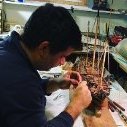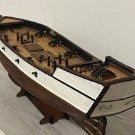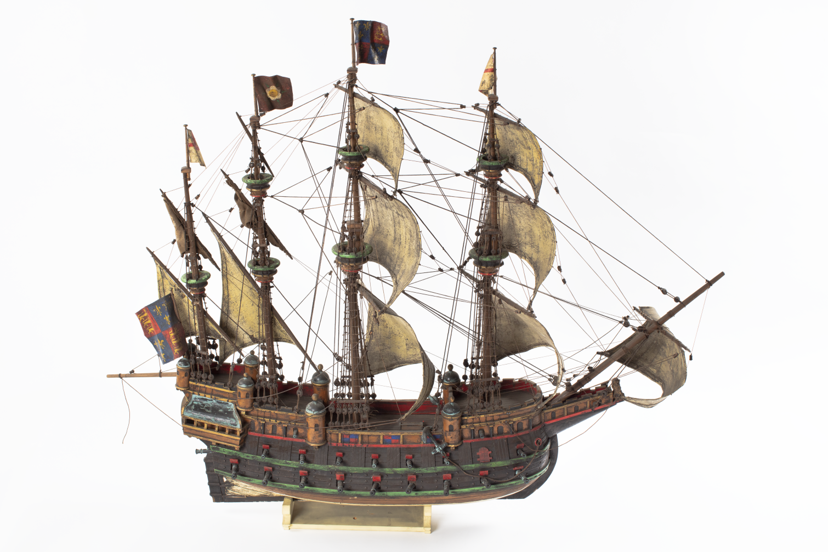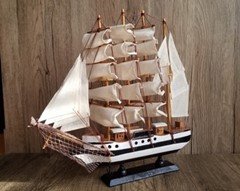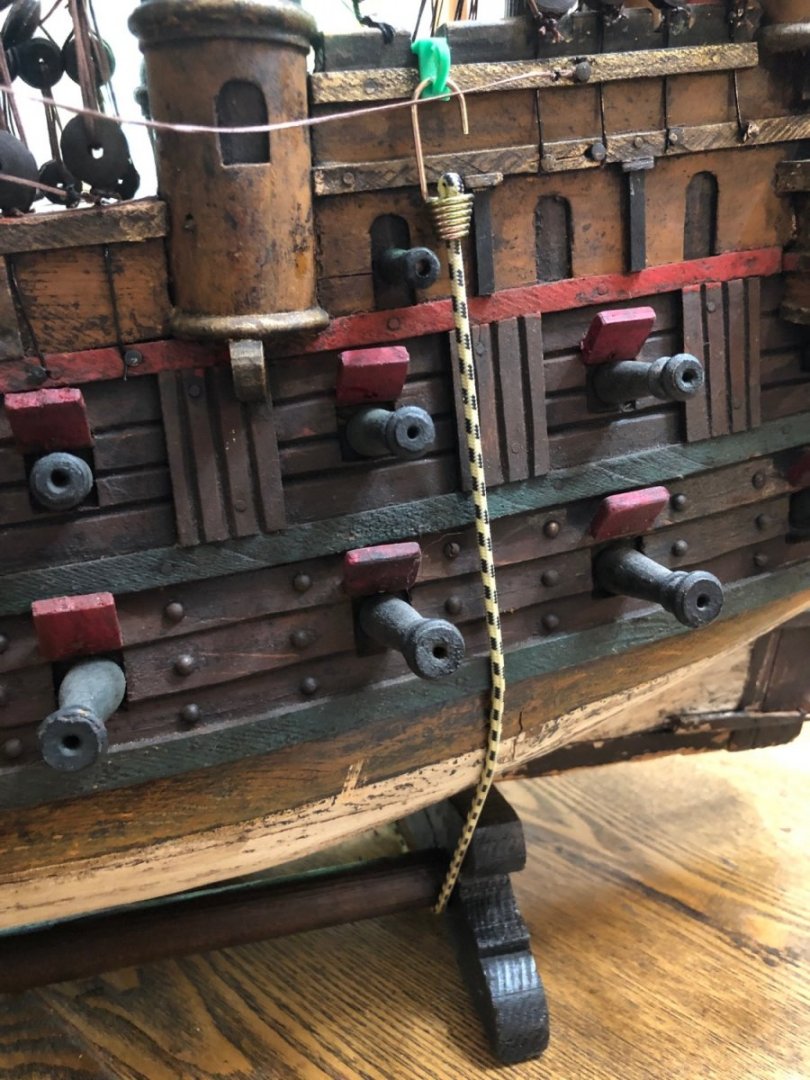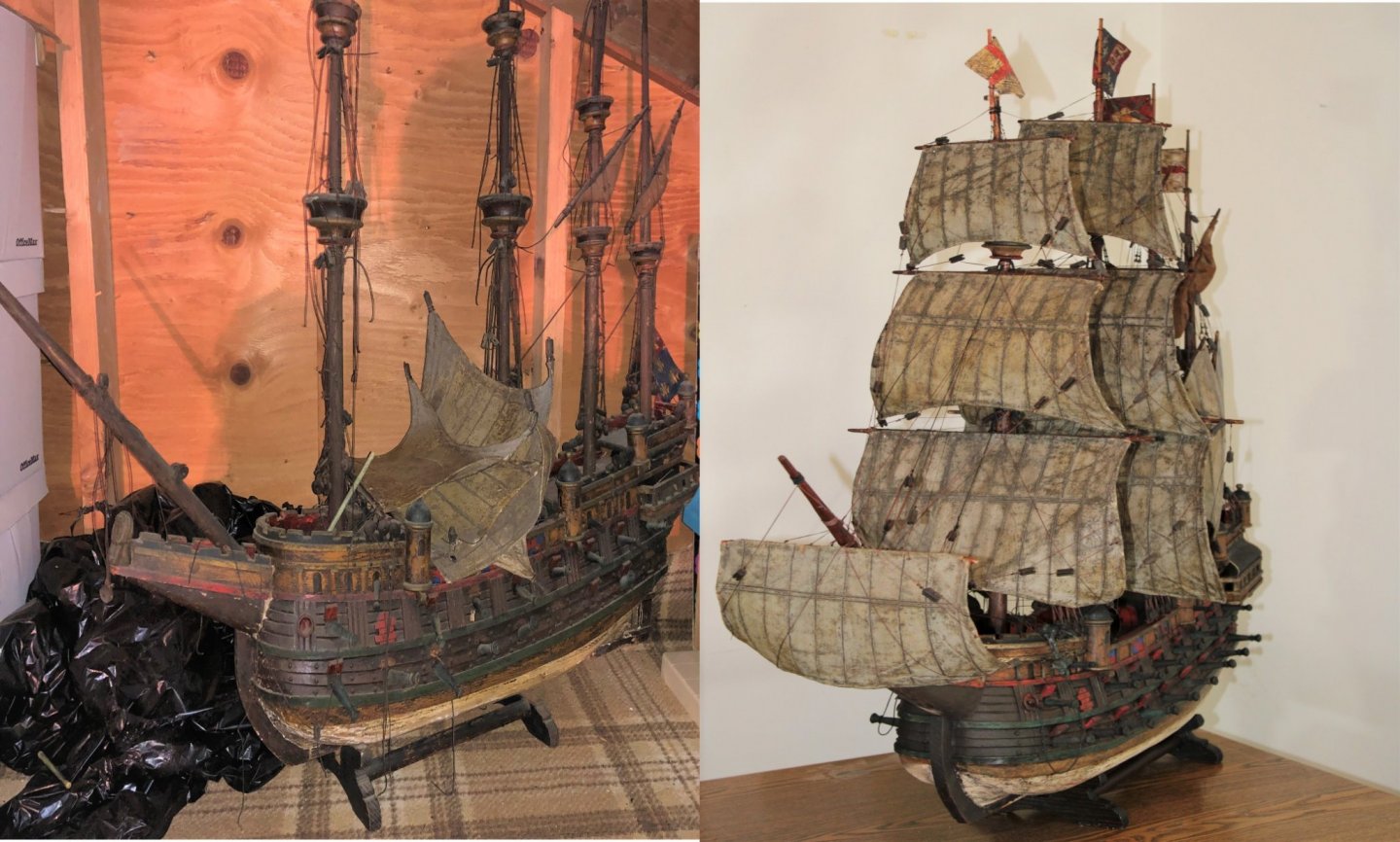-
Posts
315 -
Joined
-
Last visited
-
 Boylstont reacted to a post in a topic:
Martha by Boxbuilds - FINISHED - Chesapeake Bay Maritime Museum - Hooper Island Draketail
Boylstont reacted to a post in a topic:
Martha by Boxbuilds - FINISHED - Chesapeake Bay Maritime Museum - Hooper Island Draketail
-
 FrankWouts reacted to a post in a topic:
Savo from Serbia
FrankWouts reacted to a post in a topic:
Savo from Serbia
-
 FrankWouts reacted to a post in a topic:
Carving for Royal Caroline
FrankWouts reacted to a post in a topic:
Carving for Royal Caroline
-
 FrankWouts reacted to a post in a topic:
Carving for Royal Caroline
FrankWouts reacted to a post in a topic:
Carving for Royal Caroline
-
 Canute reacted to a post in a topic:
HMS Revenge 1577 by GrandpaPhil - 1/64 - CARD - from Victory Models Plans
Canute reacted to a post in a topic:
HMS Revenge 1577 by GrandpaPhil - 1/64 - CARD - from Victory Models Plans
-
 mtaylor reacted to a post in a topic:
HMS Revenge 1577 by GrandpaPhil - 1/64 - CARD - from Victory Models Plans
mtaylor reacted to a post in a topic:
HMS Revenge 1577 by GrandpaPhil - 1/64 - CARD - from Victory Models Plans
-
 GrandpaPhil reacted to a post in a topic:
HMS Revenge 1577 by GrandpaPhil - 1/64 - CARD - from Victory Models Plans
GrandpaPhil reacted to a post in a topic:
HMS Revenge 1577 by GrandpaPhil - 1/64 - CARD - from Victory Models Plans
-
Phil, Glad to see you logging this card build. Card can be challenging due to strength and rigidity. But, especially for folks without space and/or woodworking tools, card is a good option for someone thinking about this craft. You and Doris have demonstrated that it is plausible to build, not just rowboats, but complex ships which could encourage them. Like most, I’ve used card and with a sharp blade some intricate parts can be produced. But I haven’t had the guts to try a full ship. I have plans for a card bireme and the Hindenburg that I might tackle now, once I absorb all your practices. Thanks for sharing. I look forward to this build.
-
 Boxbuilds reacted to a post in a topic:
New and need help to identify a mystery model? Read here first!
Boxbuilds reacted to a post in a topic:
New and need help to identify a mystery model? Read here first!
-
There multiple differences. The sails are not painted. The deadeyes are not tapered and have a right angle edge from the flat front to the to the side. The fighting towers have a similar profile but the opening is different, as noted. The crows nest shape is different. The is no discernible paint. There is no cover on the gallery. There are chasers present. Gun placement is different. I can’t see a figurehead. The anchor has the same shape. Guns were turned to the same shape and gunport covers appear the same. Masts and yards have similar taper. I’m inclined to think that they were both made by the same group because of the guns and casting of the anchor (unique shape). The differences mostly seem time saving as you point out Keith. The gun placement is puzzling. It doesn’t match old images. Regardless, this would be keen to restore although there would be a lot of guessing about the details to be weathered. What if it got restored in time for the Midwest show!
-
I wonder if we should be more tolerant of some decorative ship models. Some can be so rough that we might not find them acceptable for our collections. Beauty is in the eye …… But some represent the standard for the time they were built and are worthy of some respect. Attached are photos of a one hundred+ year old decorative model and a simplistic modern decorative model. One sits in a museum and was said to have been featured at the 1937 World Exposition in Paris. The other is sold on a popular website. Both are 4 masted, have a solid wooden hull, are inaccurately rigged and were/are reasonably priced in their time. My point is probably obvious. The value of these items is relative to other factors besides the precision and/or accuracy with which they were built. As model shipwrights and proponents of nautical history, we should want to acknowledge the history of “model shipwrighting.” We have probably seen models of Egyptian funeral barges from BC periods. We were also seeing how some model shipwright of the day built that model. That’s history. Building models depends on the information, tools, materials, and technology of their time. The ship models for burial chambers, cathedrals, powerful merchants, naval engineers, etc. were limited by these and other factors. We wouldn’t expect to see an admiralty model in the 9th century, for example. Given this perspective, maybe some of these old, but less accurate models are worth appreciating for what they were. Another aspect of judging decorative models is the converse of the factors vs period in which they were built. When the information, tools, materials and technology IS available when a model is built but these factors were not well applied to the result, then it’s more understandable when that model disappoints. While some people are not nautical fans and don’t want ship models, others don’t have the knowledge, skills or time to fix an old decorative ship that the cat destroyed a decade ago. So out goes the model. For the right person, finding this wreck can be fortunate if they evaluate it a moment upon discovering it. Maybe it has enough history, nostalgia, character, or challenge to appeal to you. If so, it’s worth thinking about restoring it.
-
For some reason I'm captivated by some of these German models. My best research puts their rise in the period of restoration in Germany after WWII. I cannot identify a manufacturer either. One possibility is that they were made as a home industry -- a lot popped up at the time. I have found evidence of many decorative models from that period that use the same unique blocks, deadeyes, rigging technique, painted sails and paint scheme which, to my mind, indicates a bigger effort. I read that one of the German wooden toy makers that existed then did dabble in ships. There wasn't enough elaboration to confirm those ships were the ones of interest. So that may be a dead end. In summary, I also tried to establish a provenance to the Great Harry and spent several months searching any source I could think of, to no avail.
-
Howard I spent a year restoring a decorative model of the Harry. I spent a lot of time researching the ship and have some material hinting at the model’s rigging. I found that these models sport “representative rigging”—something that gives the viewer a sense of the rigging but in no way complete or accurate. Furthermore, many components like blocks, flags, guns etc will be missing and need to be fabricated. My wife will kill me but if you need help restoring yours we should talk more. John
-
A couple of additional photos as requested Harry is tied down for travel with custom retainers Reproducing 80+ deadeyes and blocks and riggging him properly was a challenge
- 71 replies
-
- great harry
- henry grace a dieu
-
(and 3 more)
Tagged with:
-
Thank you. It's been wonderful and tiring but the ship is beautiful.
- 71 replies
-
- great harry
- henry grace a dieu
-
(and 3 more)
Tagged with:
-
Darrell, Bill and I have finished Harry. After over 500 est hrs of work and a year I have taken to calling Henry Grace a Dieu, "Harry." ....it's shorter and we are certainly familiar. He has been cleaned, his broken or missing parts are present, his sails are all rigged and he's ready for another hundred years. Thanks to all for your support and suggestions. Special thanks to the Powerhouse Museum of Sydney, Australia for the great photos of their copy of Harry. It was a valuable assist. Below, find the before/after shots
- 71 replies
-
- great harry
- henry grace a dieu
-
(and 3 more)
Tagged with:
-
Happy Christmas and Happy Holidays, all. Sorry about updates. The masts and yards were shipped off to another club member to rig. Once they get back, I will complete the job.. In the meantime I've built a small stern-wheeler and am finishing the Constructo "Louise" steam launch. I'm sure the rigged masts will arrive soon. Till then, have a safe, healthy New Year.
- 71 replies
-
- great harry
- henry grace a dieu
-
(and 3 more)
Tagged with:
-
 Boxbuilds reacted to a post in a topic:
Sovereign of the Seas 1637 by md1400cs - Sergal - 1:78 - to be hopefully bashed
Boxbuilds reacted to a post in a topic:
Sovereign of the Seas 1637 by md1400cs - Sergal - 1:78 - to be hopefully bashed
-
Chuck, Of all the jobs required to build most models, I don't think any are as daunting as taking a chisel to a keel for the rabbet. Talk about quickly screwing up, making a mistake cutting the rabbet is rarely recoverable (I know). The forums and build logs talk a good bit about the topic, and there are YouTube videos regarding the topic on real ships. Would it be useful to demonstrate the techniques from bearding line to laying a plank to installing a false stem? Thanks for asking for ideas and your unfathomable experience. John
About us
Modelshipworld - Advancing Ship Modeling through Research
SSL Secured
Your security is important for us so this Website is SSL-Secured
NRG Mailing Address
Nautical Research Guild
237 South Lincoln Street
Westmont IL, 60559-1917
Model Ship World ® and the MSW logo are Registered Trademarks, and belong to the Nautical Research Guild (United States Patent and Trademark Office: No. 6,929,264 & No. 6,929,274, registered Dec. 20, 2022)
Helpful Links
About the NRG
If you enjoy building ship models that are historically accurate as well as beautiful, then The Nautical Research Guild (NRG) is just right for you.
The Guild is a non-profit educational organization whose mission is to “Advance Ship Modeling Through Research”. We provide support to our members in their efforts to raise the quality of their model ships.
The Nautical Research Guild has published our world-renowned quarterly magazine, The Nautical Research Journal, since 1955. The pages of the Journal are full of articles by accomplished ship modelers who show you how they create those exquisite details on their models, and by maritime historians who show you the correct details to build. The Journal is available in both print and digital editions. Go to the NRG web site (www.thenrg.org) to download a complimentary digital copy of the Journal. The NRG also publishes plan sets, books and compilations of back issues of the Journal and the former Ships in Scale and Model Ship Builder magazines.



